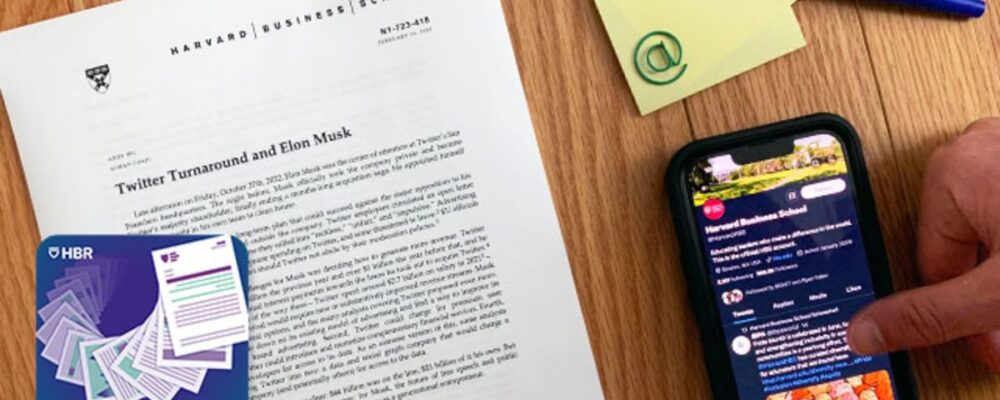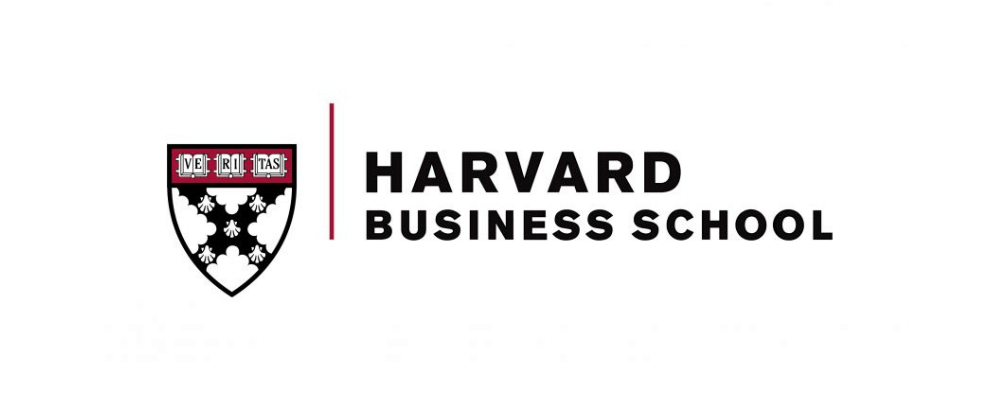Virtual meetings have become the standard for global and hybrid team communication, but what happens when the call ends? Participants who are in the same room keep talking—and the tone of those conversations can dramatically impact team dynamics over time, says new research.
Think of the Zoom screen or the conference call as a theater, says Harvard Business School Professor Leslie Perlow, building on the foundational work of sociologist Erving Goffman. “You’re on the frontstage, and that’s for all the world to see,” she says. “And then there’s the behind the scenes, where you take off the mask, and what do you unveil?”
In studying backstage interactions among employees working for a global company in the United States and China, Perlow found that team members in the two locations often interpreted what happened on the frontstage differently. If not managed correctly, this disconnect can lead to misunderstandings and discord that can damage working relationships, she says.
In a post-pandemic world where hybrid meetings have become the norm for many businesses, the findings provide a cautionary tale about the rifts that can form among remote teams. However, these problems aren’t inevitable. Strong communication is key, says Perlow, who provides pointers to help managers head off difficulties before they spin out of control.
Perlow’s paper, “Backstage Matters: Collective Energy and Information-Sharing on Global Teams,” was cowritten with Wenjie Ma of the Shanghai University of International Business and Economics and Eunice Eun of Yale School of Management. It is currently in-press at Academy of Management Discoveries.
Where does the conversation go when the call ends?
Perlow and her colleagues didn’t set out to examine post-meeting interactions; they initially sought to understand what makes high-performing global teams tick. Working with a high-tech company headquartered in the US, the researchers studied two pairs of teams considered stars within the company. Both global teams had a lot in common in terms of geographical distance, time zones, team size, communication technology, language, status, and task design.
“What we discovered was great variation in what happened when they disconnected after meetings.”
Among both global teams, the research team also had the chance to observe what happened when the US subteams were suddenly put in charge, since during the study period, each of the US subteams was made the code owner of the software they were designing. Both Chinese subteams were demoralized; however, what happened next on each of these teams was remarkably different.
“What we discovered was great variation in what happened when they disconnected after meetings,” says Perlow, the Konosuke Matsushita Professor of Leadership at HBS, who is an ethnographer intent on studying work dynamics.
With Ma in China and Eun in the US, each of the field observers spent eight to 12 hours a day with the teams for seven months, spending plenty of time attending meetings, having lunch with workers, and interviewing team members to get a comprehensive view of perceptions on both sides. The researchers also uploaded extensive notes to share with each other every day. Perlow spent time in both locations to understand and compare dynamics across locations.
How discontent brews backstage
The first of the two global teams the researchers observed, which they named Team Radius, saw its US subteam take over code ownership soon after the study began. Immediately, the team in China began complaining among themselves, while the US team had no idea they were miffed. “Our own team was taking field notes from both sides and seeing the interpretation of [virtual meetings], and we were constantly aware that we were [seemingly] in two different meetings,” Perlow says.
The field researchers started noticing how much the headquarters team was missing on the frontstage of virtual meetings when people on the other team were offscreen or hitting mute. In one case, the team’s leader in China was saying “yes” over the phone while shaking his head “no.”
“It was fascinating, albeit quite distressing, to put the stories from the two sides together and realize we were the only people who understood what was really going on because nobody else had access to both sides.”
The gap in communication was particularly acute after the teams ended the meeting, on what the researchers refer to as the “backstage.” The team leader in China would vent his frustrations, and other team members would agree and echo the concerns, grousing about the lack of respect from headquarters. It wasn’t that Team Radius’s leader was a bad influence—”he’d previously been a loyal ‘company man,’” Perlow says. Early on, however, he felt that his suggestions to return some control back to the Chinese team were rebuffed, which only increased his dissatisfaction. The dynamics became so problematic—and he became so disillusioned with working at a global business—that he decided to leave the company.
In addition to the deteriorating morale on Team Radius, growing resentment damaged the relationship between the groups. The Chinese team began withholding more and more information from headquarters because of the growing negative energy between them. And in the backstage, their collective energy toward their US team grew from fear to frustration and eventually to anger. Meanwhile, Perlow says, the US team didn’t understand Team Radius’s reactions and expressed their own frustrations about their Chinese partners. Ultimately, both sides began sharing limited information in the frontstage global meetings, adding to the dysfunction.
“It was fascinating, albeit quite distressing, to put the stories from the two sides together and realize we were the only people who understood what was really going on because nobody else had access to both sides,” Perlow says.
Two other teams make remote work
Yet the researchers also found that remote teams can work together harmoniously if they carefully manage the relationship.
About four months into the study, the researchers observed a much different reaction to a similar change in code ownership by the other team they were observing, which they named Team Prism. Again, the reaction from the Chinese team was initially negative; however, the US team was more open to hearing their suggestions for improving the situation, including the notion of putting a Chinese-speaking liaison on the US team to facilitate communication.
“They invested more in these moments to reframe the situation.”
“The idea was never actually put into practice,” Perlow says. “But there was much more of an attitude of, ‘We want to work with you’ and a sense of feeling more appreciated by the leader of the other team.”
As a result, the Chinese team began to work more constructively in dealing with orders from headquarters. “There were still moments of frustration when they hung up,” says Perlow. But rather than allowing negativity to spiral out of control, the team members worked to deal with issues that arose directly. “When the US team would raise an issue, they would say, ‘OK, let’s figure this out,’ instead of just being dismissive. They invested more in these moments to reframe the situation.” And even when they hung up and faced unresolved issues, the team in China tried on the backstage to discuss and explore possible explanations, rather than play into the negativity.
Both subteams composing Team Prism increasingly shared knowledge and collaborated, rather than treating each other with disdain or suspicion.
Advice for managing the conversation
Perlow says businesses that work with remote teams can take several steps to improve working relationships:
- Be aware of the backstage. “How many of us think about what’s happening on the other side of the Zoom call after we hang up?” Perlow asks. Just being aware that another group might have a different view of the meeting—reinforced by their own collective positive or negative energy—can help make everyone more sensitive to others’ needs.
- Create space for communication. Rather than assume you know what people on the other side of a call think, it’s important to ask questions and encourage people to voice concerns. “None of that is novel,” says Perlow. “What’s new is this recognition that if you don’t do these things, there is this whole world backstage that can get out of hand.” Encouraging people to voice concerns moves potential problems from the backstage of meetings to the frontstage, where they can be dealt with constructively.
- Catch backstage issues early. “One of the big questions we had is, at what point is this savable? And at what point is it too late?” Perlow asks. While they weren’t able to come up with a definitive answer, it was clear to the researchers that both groups had an opportunity to turn things around early on. Once a situation becomes completely negative, however, group dynamics can quickly head south.
- Consider a bridge between teams. Just like Team Prism proposed having a liaison that could speak both languages, sometimes it can be helpful to assign a person to act as a bridge across groups. Just be careful, Perlow says, about how you use them. “If the person is truly a bridge and enables constructive conversation, that’s great, but if the person aligns themselves with only one side, be careful, as that may sharpen the conflict.”
In future research, Perlow plans to examine how the backstage influences behavior at companies with hybrid working arrangements, where some employees are in the office while others are remote. The backstage is potent, she says, which means it’s more critical than ever that people feel heard on the frontstage because there is increasingly less access to what’s happening on the backstage.
At the same time, Perlow also notes that “the backstage is everywhere,” not just among remote or hybrid teams. “People often react differently to the same meeting,” she says, “and it’s important to realize potent dynamics may be playing out behind the scenes, especially when people don’t feel heard or empowered.”
You Might Also Like:
Feedback or ideas to share? Email the Working Knowledge team at hbswk@hbs.edu.
Image: Illustration created by HBSWK using an image by AdobeStock/BGStock72
“Harvard Business School is the graduate business school of Harvard University, a private research university in Boston, Massachusetts. It is consistently ranked among the top business schools in the world and offers a large full-time MBA program, management-related doctoral programs, and executive education programs.”
Please visit the firm link to site






